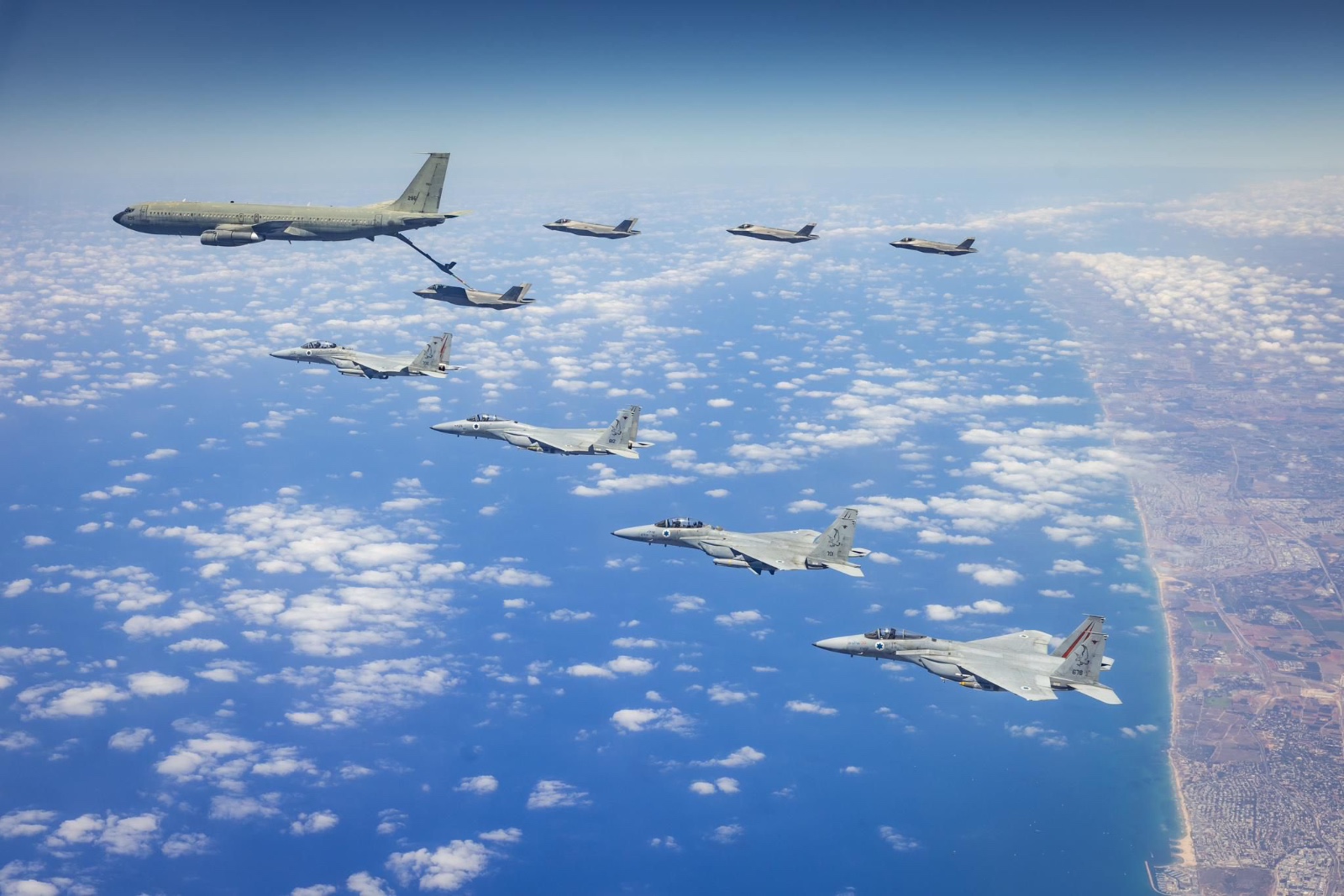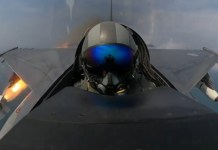Amid the threat of an attack by Iran and its proxies, the Israeli Air Force (IAF) conducted an air refueling drill with its cutting-edge fighter jets.
The Israel Defense Forces (IDF) said in a statement that the exercise “simulated a long-range flight deep in enemy territory while conducting aerial refueling several times in short periods.”
A video was also subsequently put out by the forces.
In a post on social media site X (previously Twitter), the IAF said: “The Israeli Air Force practiced aerial refueling of fighter jets in Israeli airspace. The exercise simulated long-range flight deep behind enemy lines, performing aerial refueling in short periods. Aerial refueling is an operational capability required by the combat force, enabling it to remain airborne for long periods.”
The IAF labeled the drills as an exercise of readiness. They included the service’s workhorses, including the F-35I “Adir,” the F-15 “Baz,” and aerial refueling “Ram” aircraft (Boeing 707).
The drills were conducted in the wake of repeated warnings by Israel’s leadership that it will carry out a massive retaliation if it comes under attack by Iran or its proxies, including Hezbollah. This became evident with IAF’s admission of practicing strikes deep behind enemy lines, an indirect reference to potential attacks on Iranian territory.
Israeli Air Force Practiced Aerial Refueling of Fighter Jets
Yesterday (Thursday), the Israeli Air Force practiced aerial refueling of fighter jets in Israeli airspace. The exercise simulated long-range flight deep behind enemy lines, performing aerial refueling in short periods… pic.twitter.com/rNsF5EzWfd
— Israeli Air Force (@IAFsite) August 16, 2024
The refueling of the F-15 and F-35 was especially significant, as the IAF has been actively working to extend the range of its fighter jets to facilitate long-range attacks on its adversaries.
Last month, for instance, the IAF carried out a long-distance strike on an oil depot in the Houthi-controlled city of al-Hudaydah in western Yemen. According to reports, the IAF F-15 Baz jets took the shortest route, covering at least 1,250 miles away.
It was the first-ever attack carried out by the IAF on Yemen territory, which was perceived by analysts as a direct message from Israel that it was ready to launch long-range strikes against its enemies. In the aftermath of the strike, a plethora of photos and videos were published on the internet. At least one of them showed the F-35I Adir with a refueling tanker.
Israel has been honing its long-range strike capabilities for several years amid burgeoning tensions with Iran, with a special focus on the F-35I stealth aircraft that can launch an attack without being detected by hostile air defense systems.
The recent display of military strength, interpreted as a “direct message to Iran,” occurs amid growing concerns over a potential Iranian assault. Iran has charged Israel with the assassination of Hamas’ political leader, Ismail Haniyeh, on Tehran’s soil. The Iranian leadership has declared that the attack infringed on its sovereignty and has pledged to seek retribution.

The attack has been expected for the past few weeks, with some reports suggesting that Tehran may have been reassessing its strategy, which has postponed the action. Nonetheless, Israel has remained wary, especially since a similar attack was launched by the Iranian forces in April in retaliation to the Israeli bombing of the Iranian embassy in Syria.
In addition, the Lebanon-based Hezbollah group, which is alleged to be an Iranian proxy, has also called for revenge after Israel assassinated its top commander, Fuad Shukr, last month. Officials from Israel and its ally, the United States, fear that a multi-pronged attack could be launched by Iran and Hezbollah-triggering a larger regional war.
In contrast to Iran, which appears to be biding its time, the Hezbollah group has engaged in force posturing by releasing a video showcasing its massive tunnels and military capability.
Hezbollah Flaunts Military Capability Amid Tensions
In a video published on August 16, Hezbollah provided a rare glimpse of its vast network of tunnels, revealing massive hidden multiple rocket launch systems that can be fired from below the ground— part of a vast network of armaments that may be used against Israel.
The video, more than four minutes long, initially appeared on the official Telegram channel of the Lebanon-based Al Mayadeen news channel. However, it was later published on social media sites, including X, and has been extensively shared since, attracting keen interest from politicians and analysts alike.
The video provided a unique glimpse into a tunnel network referred to as Imad-4. Hezbollah claims that the complex is confidential and has not been uncovered by any “foreign” intelligence agencies, though its precise location remains unknown. The Imad-4 was described as a “sophisticated underground facility and an extensive tunnel network, complete with missile launchpads”, by media Al-Mayadeen.
⚡️BREAKING
Hezbollah has unveiled for the first time a large underground missile city, equipped with precision missiles ready to be launched pic.twitter.com/7SWNrddEqh
— Iran Observer (@IranObserver0) August 16, 2024
The tunnels featured in the video are so massive that trucks and other heavy vehicles can easily pass through them.
Various motorcycles can be observed racing in the underground passages. The tunnel walls are adorned with propaganda posters, and access is granted through sturdy blast doors, complete with lighting and communication systems.
Reports in the media referred to these tunnels as a “state-of-the-art technical system and a secure communication network that links it to the outside world, allowing it to receive launch orders within minutes”. The report also noted that communications on the network are “highly encrypted for added security.”
Military watchers noted that the most fascinating features of the tunnel were probably the openings carved out of the ceiling in some places, which enable rockets to be shot without the launch vehicles needing to exit the tunnels.
This means that the rockets can be relocated across the tunnels, making them increasingly impossible to target, even with bunker-busting weapons. Iran has also previously shown similar ballistic missile tunnel networks.
- Contact the author at sakshi.tiwari9555 (at) gmail.com
- Follow EurAsian Times on Google News




